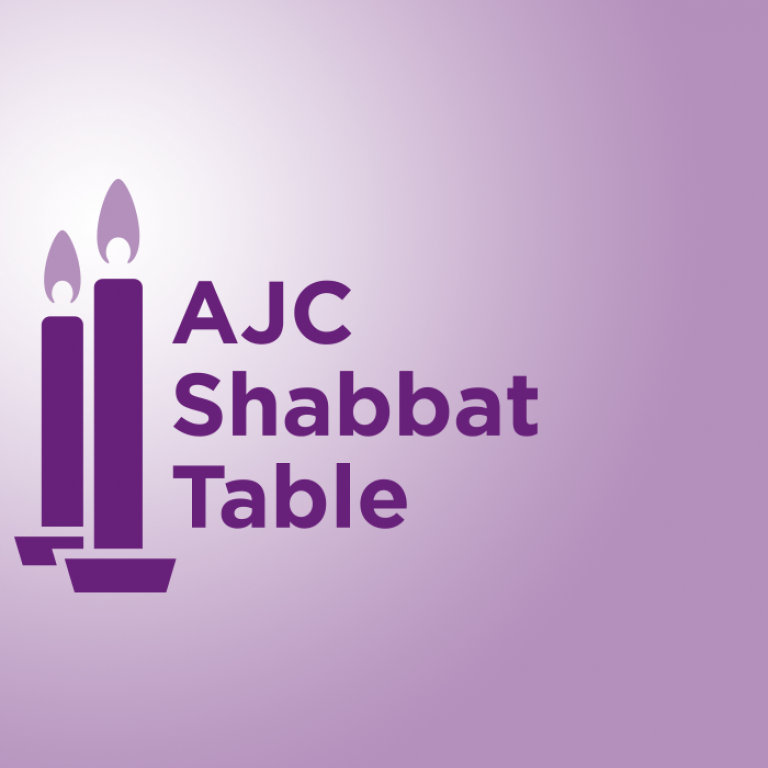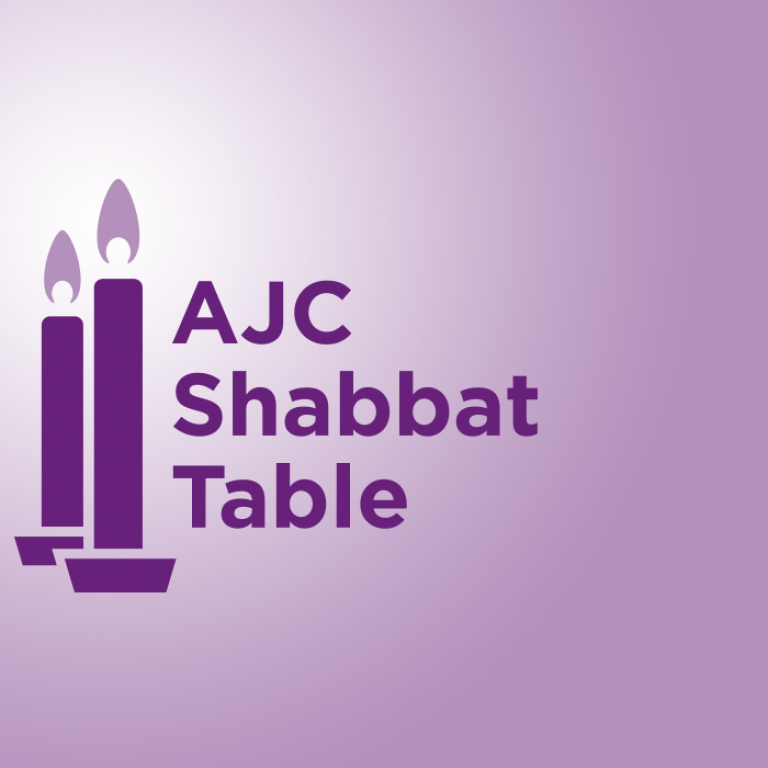October 9, 2020
This Shabbat: Shabbat Shemini Atzeret and Simchat Torah
This weekend, we will celebrate the Jewish holidays of Shemini Atzeret and Simchat Torah. On Shabbat, which is also Shemini Atzeret, Jews around the world will recite the prayer for rain, hoping that Israel will have a productive and rainy winter after its traditionally dry summer season. We all know that rain is critical to our lives, nourishing the land that grows our crops and hydrating our own bodies with the water we need to survive. But perhaps a focus on rain can also transmit another message - one about equality and justice. In Breishit Rabbah, a rabbinic commentary on the Book of Genesis, the rabbis teach that, originally, in the Garden of Eden, water was transmitted to the land via an underground spring. But then, God changed course and decided that the land should only receive water in the form of rain from above. The rabbis explain that God changed course “on account of strong-armed people … so that the high might drink like the low, and so that all might look toward the heavens.” In other words, if water reached the land only via a spring, those with more power could control access to that water, keeping more of it for themselves and denying it to those with less power. Rain was the great equalizer; since raindrops fall everywhere, all have equal access to the water. We don’t need to believe the factual truth of this parable in order to hear the powerful message the rabbis were trying to transmit. The rabbis were teaching that building a just society means ensuring that all have access to the resources we need to live. Those with power must not be permitted to cordon off those resources for their own benefit. As we head into what we hope will be a prolific rainy season for Israel, let us remember the compelling message of justice that falls with the raindrops.
This Week in Jewish History
October 11, 2011 - Deal reached to release Gilad Shalit
In August 2006, Gilad Shalit, a 19-year old Israeli soldier, was captured by Hamas militants during a border skirmish. He was the first Israeli soldier captured by Arab forces since 1994. Holding him in a secret location in the Gaza Strip, Shalit’s captors would not even allow the International Red Cross access to him. The only indications they gave to the world that Shalit was still alive were an audio tape, a video recording, and three letters. Over the years, Shalit’s parents continually lobbied the Israeli government to find a way to get their son back and he remained very much in the minds and hearts of the Israeli public. Finally, on October 11, 2011, after 1,934 days in captivity, Shalit was freed in a controversial prisoner swap between Hamas and the State of Israel. That swap, the first in 26 years to gain the freedom of a living Israeli soldier, exchanged Shalit for 1,027 Palestinian and Arab Israeli prisoners held in Israeli jails, including some who had been jailed for heinous acts of terror and murder of Israeli civilians. This was the highest price Israel has ever paid for a single soldier. While some family members of victims of terror understandably opposed the prisoner swap because the terrorists that murdered their loved ones were being freed, the vast majority of the Israeli population supported it wholeheartedly, feeling that it was critical to bring Shalit home. Israeli Prime Minister Benjamin Netanyahu defended the deal, arguing that it struck "the right balance" between Israeli security risks and the imperative of returning Shalit "to his family and people.” In a televised address from Tel Nof Airbase shortly after Shalit was returned, Netanyahu stated, "Today we are all united in joy and in pain.” This past February, Israelis quietly rejoiced along with the Shalit family when Gilad got engaged to his girlfriend Nitzan Shabbat. Then-New York Times columnist Bari Weiss pointedly noted, “it seems to me there is a lot of wisdom in thinking of a country more like a family.”
October 14, 1943 - Jews revolt in the Nazi death camp of Sobibor
For many years after the Holocaust, an all too common refrain echoed through the Jewish community and the world at large that claimed the Jews went “like sheep to slaughter.” In this narrative, Jews were seen as passive victims, unable, and perhaps even unwilling, to fight back against Nazi forces. We now understand that this narrative is simply untrue. Jews resisted in every way they possibly could - religiously, intellectually, spiritually, and yes, they also resisted by physically fighting back. Jews fought as partisans, led ghetto uprisings, and even staged revolts against Nazis from inside concentration camps. One such concentration camp revolt took place in the Sobibor death camp on October 14, 1943. Two Jewish prisoners, Leon Feldhendler and Alexander Pechersky, courageously led an uprising, which helped 300 prisoners to escape and resulted in Nazis permanently shutting down the camp. The plot cooked up by the prisoners involved stealing and hoarding weapons to attack Nazi soldiers before roll call one evening. Then, Jews would rush the gates while Nazi forces were weakened. Remarkably, the plan worked to a degree. Inmates murdered twelve Nazi guards, giving some cover to the hundreds who stormed the gates. Pechersky famously charged those who managed to escape to “let the world know what happened here.” Some were shot by German and Ukrainian guards as they tried to escape, but many others managed to get out. Of the 300 who escaped during the commotion, 58 of them survived to see the end of the war. Among the survivors were Feldhendler and Pechersky, the original organizers of the uprising. Feldhendler was tragically murdered by Polish antisemites in the ending days of the war in April 1945. Pechersky survived to write an account of what happened at Sobibor and to testify against Nazi perpetrators and Ukrainian collaborators in trials during the 1960s and 1980s. He passed away at the age of 80 in 1990.
A Treasure from the AJC Archives: “Mr. Biggott” Cartoons (1930s)
It is not hard to see that anti-immigrant sentiment in America has often overlapped with antisemitism. While Jews are not a large immigrant group any more, from the late nineteenth through the mid-twentieth century, Jews represented a significant portion of those trying to immigrate to the United States each year. The 1930s were a particularly fraught moment for both anti-immigrant sentiment and antisemitism. As Hitler cemented his control over Germany and began his expansion into Austria and Czech lands, many Jews sought to flee Nazi-controlled territories for America. Meanwhile, many Americans sought to keep refugee Jews far away from American shores. AJC, which has a storied history fighting both antisemitism and anti-immigrant sentiment in America, facilitated the creation of a series of cartoons to combat anti-immigrant sentiment in the United States during this period. Called Mr. Biggott, the cartoons poked fun at bigoted individuals who flaunted anti-immigrant sentiments. Take a look at AJC’s collection of Mr. Biggott cartoons here.
For Shabbat Table Discussion: Unrest in Brooklyn
Earlier this week, New York City Mayor Bill de Blasio announced that the city would impose further restrictions on schools, houses of prayer, and businesses in nine zip codes in the city where Covid rates were rising at alarming rates. While New York Governor Andrew Cuomo overturned some of the mayor’s restrictions, he upheld others. The zip codes in question contain neighborhoods with large ultra-Orthodox (Haredi) Jewish populations, many of whom have flouted regulations such as mask-wearing, limits on the size of gatherings, and social distancing. In response to the announcement, hundreds of Haredi Jews filled the streets in protest. Many Haredi Jews feel their community has been unfairly targeted because of its visibility, and that many other individuals and communities have been equally, if not more, lax about following coronavirus restrictions. One of the protests turned violent and ugly, with protestors physically attacking at least two fellow Haredi Jews, Mordy Getz and journalist Jacob Kornbluh, calling them “Nazis” and “traitors” for wearing masks and cooperating with state and city authorities. Much of the violence seemed to be fueled by hate-filled rhetoric from a rabble-rouser in the community named Heshy Tischler, who is running for New York City Council. In addition to inciting violence against his fellow Jews, Tischler was recorded spewing racist epithets and threats against Mayor de Blasio’s wife, Chirlane McCray. In response to Tischler’s rant, AJC tweeted, “Bigotry is bigotry, no matter who it comes from. @HeshyTischlerNY's vile and racist rant, which reflects his ugly track record of hate and incitement, should be condemned by all.”
Questions for discussion at your table:
- What is our responsibility to call out despicable behavior by fellow Jews? Is it greater than if the actions were taken by non-Jews?
- Do you think that New York city and state officials have treated the ultra-Orthodox community fairly? Why or why not?
- What advice might you give to New York city and state officials and to Haredi leaders about next steps? How do you think this toxic situation could be improved? What would lower the temperature in these neighborhoods?
For more information about how to talk to your children about the unrest in Brooklyn right now:
- Read this excellent article in Tablet by Yair Rosenberg which lays out a possible path to calm the crisis.
- Read this New York Times article, titled “When Covid Flared Again in Orthodox Jewish New York” for a nuanced exploration of the reasons that Covid-19 is spreading so quickly in Haredi communities.
- Listen to this January 2020 episode of AJC’s podcast People of the Pod in which Seffi Kogen interviewed Jacob Kornbluh (one of the victims of Haredi violence this week) about antisemitism directed at his community.
Shabbat shalom and chag sameach!
שבת שלום וחג שמח!






